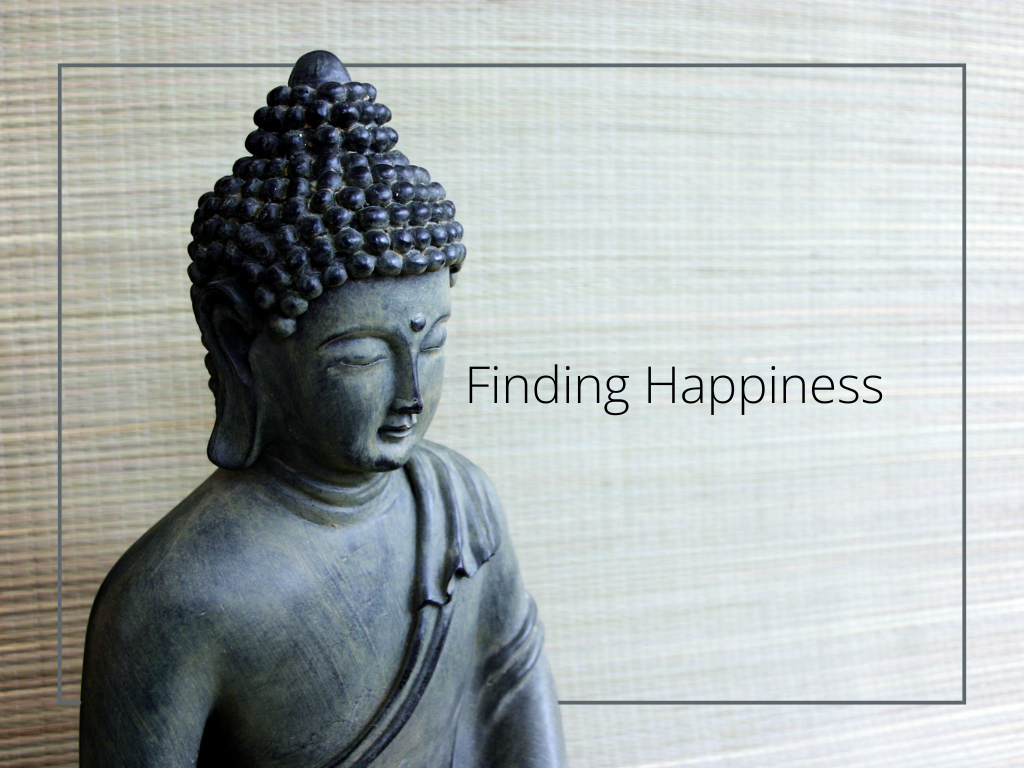You ever have those moments in life where you feel like happiness and peace just aren’t within your grasp? Or maybe you have them but they’re far and few in between? This post is all about where we can find happiness especially when things are tough.
The Shin Buddhist path is often described as a path of gratitude. It’s not about reaching enlightenment, building good karma, or having a favorable rebirth. This path is about saying thank you for what we have already received. It’s through this practice of gratitude we can find inner joy and peace.
The Buddhist teachings tell us wanting is what makes us unhappy. The troubles we face are often in our desires. How many times have we thought or said, “I’ll be content when I get…a promotion, or lose weight, or find a life partner?” Even when we get these things, we aren’t usually satisfied. The promotion may come with extra hours or a boss we don’t like. Our life partner might have annoying little habits that get on our nerves at times. We might not be more confident even at our goal weight. That threshold into happiness gets moved further away as a result. There are more and more conditions that need to be met before we can truly be happy. This becomes a trap – forever chasing after something we cannot reach.
The good news is happiness isn’t down the road. It isn’t out of our grasp. Happiness is here but we have to learn how to find it. The even better news – it’s not as hard as you think.
What’s one thing you’re grateful for? My example is my morning cup of coffee. It was iced with just the right blend of milk and sweetener. While this cup of coffee was tasty but there’s so much more behind it. It was the results of so many things coming together just so. Someone had to plant the beans, tend to them, making the equipment to brew the coffee, transport it, work at the coffee shop, so much! We might even include the formation of the planet, the water, the sun, the generations of people between then and me taking that first sip. The thought of what all took is overwhelming and inconceivable! But we don’t think about all these wonderful things and amazing occurrences. Why not?
Our human brains are program to remember negative things. This is how our species has endured. If you’ve managed to survive an encounter in a lion’s den, you’ll learned a powerful, negatively reinforced lesson: “Lion dens are bad – avoid them.” We may not be fighting lions but we still this same brain pattern happens in modern life too. Let’s say you just had your annual review at work. You received ten positive comments about your work, and one negative one. Guess which one you’re most likely remember? The negative one. Psychologists refer to this as negativity bias. We tend to remember negative events and dismiss positive ones.
Psychologist Martin Seligman is the director of the Positive Psychology Center at the University of Pennsylvania. He created the Three Good Things method. In his method, people are asked to write down three positive things that happened that day just before going to bed. They did this over a two-week period. He said they didn’t have to be big or important things either. It could be something like the cup of coffee. Once you have written down your three positive things, reflect on why each good thing happened. The why is key in this practice. When we think about the why, we start to see all that we have received. We also open ourselves up to see how interconnected we are. Even the accomplishments we counted as our own successes are due to the myriad benefits received from others. The findings from his study showed using this method for two weeks had the same effect as Prozac in improving the subjects’ well-being, and participants were still seeing the benefits 6 months later!
When I first heard the three good things method, I thought it was Buddhist. Thinking about three good things…The Buddha, The Dharma, The sangha. We said the key was contemplation which reminded me of the contemplation sutra. To my knowledge the three good things method is not Buddhist in nature, but we can see similarities in our Buddhist practice.
Shinran, the founder of Shin Buddhism, figured this out long before modern psychology proved it in a lab. Over 800 years ago, he realized every day brings innumerable gifts of life, love, nourishment, shelter, and friendship. In Shinran’s writings, he expresses a profound gratitude to (1) the heart of the Buddha, (2) great compassion, and (3) to the masters and teachers who have transmitted that heart of compassion to him through the teachings. Three good things. Following Shinran’s examples, we see we have received so much already! If a former monk, exiled in medieval Japan, far away from his home and teacher can find such happiness and gratitude, then I believe we can too, especially because finding gratitude is what our path is about.
At temple we are often asked to join the minister in gassho and say the nembutsu. Saying, “Namo Amida Butsu” is an expression of gratitude. Everyone is invited to burn incense too. This ritual is an expression of gratitude as well. Today, I ask you take an extra moment to really connect with the gratitude deep in your heart for this path and all the amazing things we have to be grateful for.
Please join me in Gassho. Namo Amida Butsu.
~Andi



Add Your Comment